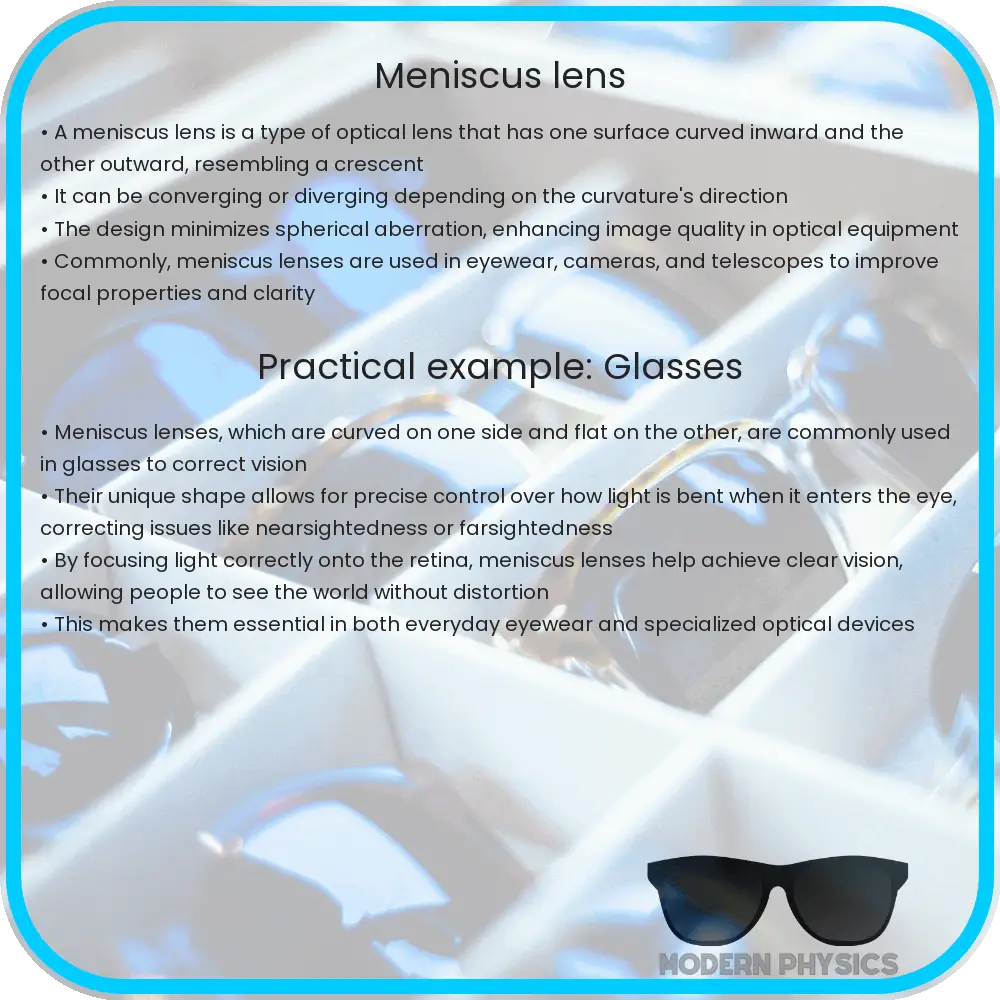Meniscus lenses, curved on both sides, balance clarity and precision in imaging systems, reducing spherical aberration and minimizing optical distortion for high-quality visuals.

Meniscus Lens | Clarity, Precision & Imaging Quality
In the world of optics, lenses play a crucial role in shaping the path of light to achieve clear and precise imaging. Among these lenses, the meniscus lens stands out because of its unique shape and impressive optical properties. This article explores the anatomy of meniscus lenses, how they work, and their significance in enhancing clarity and precision in imaging systems.
What is a Meniscus Lens?
A meniscus lens is a type of lens that is curved on both sides, with one surface being convex (bulging outwards) and the other concave (curved inwards). These lenses are named after their resemblance to a meniscus, which is the curve seen at the top of a liquid column in a container. Depending on which side is more curved, a meniscus lens can be categorized as a positive or negative meniscus lens.
Principles of Meniscus Lenses
The unique shape of meniscus lenses brings about several optical properties that make them invaluable in various applications:
The power of a lens is determined by its focal length (\(f\)), which is the distance from the lens at which parallel rays of light converge or appear to diverge.
For a meniscus lens, the focal length can be calculated using the lensmaker’s equation:
\[
\frac{1}{f} = (n – 1) \left( \frac{1}{R_1} – \frac{1}{R_2} \right)
\]
where:
Applications of Meniscus Lenses
Meniscus lenses are utilized in various fields due to their ability to enhance image quality and clarity. Some common applications include:
Benefits of Meniscus Lenses
Meniscus lenses provide several key benefits which contribute to their widespread use in optical systems:
How Meniscus Lenses Enhance Optical Systems
By incorporating meniscus lenses into optical systems, engineers and designers can achieve several enhancements:
Conclusion
Meniscus lenses, with their unique curved design, play a pivotal role in modern optics by enhancing image clarity, precision, and reducing distortions. They find applications in various fields, including cameras, telescopes, microscopes, and eyeglasses, thanks to their ability to correct optical aberrations and improve focus. The benefits they bring to optical systems—ranging from enhancing image quality to providing a compact design—underscore their importance in creating high-performance optical devices. As technology advances, the role of meniscus lenses in achieving superior imaging and precision will only continue to grow, making them indispensable components in the field of optics.
